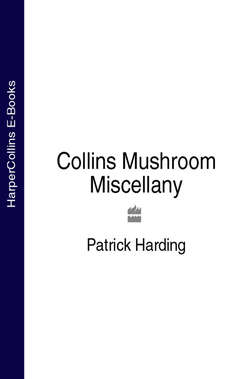Читать книгу Collins Mushroom Miscellany - Patrick Harding - Страница 8
The Fifth Kingdom
ОглавлениеPlants and Fungi under the Microscope (late 19th century)
{SPL}
The absence of eggs or seeds in the fungi resulted in a long-held belief that they arose by spontaneous generation. During the 17th century the respected naturalist Gaspard Bauchin considered fungi to be ‘nothing but the superfluous humidity of soil, trees, rotten wood and other decaying substances’. As late as 1804 it was argued that fungi resulted from shooting stars, even though 75 years earlier Micheli had shown that, under suitable conditions, fungal spores gave rise to the same kind of fungus from which they had originated.
Carl Linnaeus summed up the method of separating the three kingdoms of nature when he wrote in 1751:
LAPIDES crescunt. VEGETABILIA crescunt & vivunt. ANIMALIA crescunt, vivunt & sentiunt.
This can be translated as ‘If a thing simply existed it was mineral. If it lived it was vegetable. If it also had senses then it was an animal’.
Other schemes separated the vegetables (plants) from the animals on the basis of mobility, although this resulted in some scientists placing fungi and sponges in the same group; a problem alluded to by the great Victorian mycologists Cooke (see here) and Berkeley who began their book Fungi Their Nature, Influences and Uses (1875) with:
The most casual observer of Nature recognizes in almost every instance that comes under his notice in every-day life, without the aid of logical definition, the broad distinctions between an animal, a plant, and a stone. To him the old definition that an animal is possessed of life and locomotion, a plant of life without locomotion, and a mineral deficient in both, seems to be sufficient, until some day he travels beyond the circuit of diurnal routine, and encounters a sponge …
As long ago as 1784 a Frenchman by the name of Villemet had proposed that there should be three kingdoms: plant, animal and fungal, but for the following 200 years fungi were regarded by both the scientific community and the general public as occupying part of the plant kingdom. Professional mycologists worked within university botany departments or in the confines of botanical gardens such as at Kew.
As a child in the 1950s I purchased The Observer’s Book of Common Fungi and was informed:
Fungi belong to the vegetable kingdom but differ fundamentally from all other plants (except for a few degenerate forms) in that they possess no chlorophyll.
In the 1960s radical new schemes for the classification of living organisms were proposed, but it was not until the 1980s that the concept of grouping living organisms into not two, but five kingdoms became widely accepted. Since then scientists have embraced the notion that fungi belong to the fifth kingdom, separate from animals, plants, Protozoa and Chromista (including bacteria). A quarter of a century on from this reclassification and the majority of the British public, along with sections of the media, have not yet caught up. As late as 2005 a ‘plant-tastic’ display at the Ashmolean Museum in Oxford depicted a collection of fly agaric toadstools under the title ‘Danger! Poisonous Plants’.
One way of looking at the differences between plants, animals and fungi is to sum up their different lifestyles: plants are producers; they manufacture food by the process of photosynthesis with the help of the green pigment chlorophyll and energy from sunlight; animals are consumers that ingest their food; fungi cannot manufacture food, but instead absorb material that they break down externally, they are recyclers.
Plants and fungi can also be separated by morphological and chemical differences. Most plants are made up of cells and cellulose is a principal component of their cell walls. In contrast, most fungi (and all mushrooms and toadstools) are made up of elongated cell-like filaments, the structural component of which is largely chitin, a chemical also found in the wing cases of insects. Some fungi such as the yeasts are single celled but, in common with the filamentous fungi, they lack cellulose.
Plants, fungi and animals are termed eukaryotes: their DNA is packaged in chromosomes within nuclei. Bacteria are more primitive and lack internal structures associated with their genetic blueprint and are known as prokaryotes. It is only recently that some fungal-like organisms, the actinomycetes, have been found to be prokaryotic and are now classed along with bacteria. The strange slime moulds, which have fungal-like methods of reproduction, ingest their food in a manner similar to amoebae and have now been placed with the protozoans. Much more recently, the structure of important membranes (cristae) within the mitochondria (‘power stations’) of eukaryotes has been shown to be tubular in animals and plants, but flattened in fungi. In the 19th century, Cooke concluded:
It is exceedingly difficult to give a logical definition of what constitutes a fungus.
Spooner and Roberts, writing in 2005, were prepared to give it a try:
The Fungi comprise non-photosynthetic eukaryotes with an absorptive nutrition that do not have an amoeboid pseudopodial stage, and may occur as both single celled and multicelled organisms. The cell walls contain chitin and B-glucans, and their mitochondria have flattened cristae.
A rather more user-friendly definition is:
A very diverse assemblage of organisms and micro-organisms that obtain their nutrients from decaying organic material or from living plants, animals or even other fungi.
Other organisms that have long proved difficult to classify include the lichens, which were frequently grouped with the mosses. It is now known that a lichen consists of two organisms, a fungus and an algal component (or more rarely a type of bacterium). As the algae in lichens are capable of photosynthesis, lichens are more plant-like. As each species of lichen involves a different species of fungus, lichens are now classified by their fungal component and are included within the fifth kingdom of the fungi. Not withstanding this, the lichens differ from other fungi in many ways and have not been included in this book.
